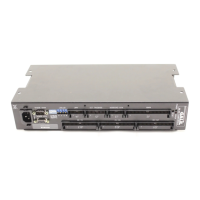14 • Chapter 2 Getting Started DMC-1500
TL 1 <CR>
Note: Once the correct polarity of the feedback loop has been determined, the torque limit
should, in general, be increased to the default value of 9.99. The servo will not operate
properly if the torque limit is below the normal operating range. See description of TL in
the command reference.
Step D. Connect the Motor
Once the parameters have been set, connect the analog motor command signal (ACMD)
to the amplifier input.
To test the polarity of the feedback, command a move with the instruction:
PR 1000 <CR> Position relative 1000 counts
BGX <CR> Begin motion on X axis
When the polarity of the feedback is wrong, the motor will attempt to run away. The
controller should disable the motor when the position error exceeds 2000 counts. If the
motor runs away, the polarity of the loop must be inverted.
Note: Inverting the Loop Polarity
When the polarity of the feedback is incorrect, the user must invert the loop polarity and
this may be accomplished by several methods. If you are driving a brush-type DC motor,
the simplest way is to invert the two motor wires (typically red and black). For example,
switch the M1 and M2 connections going from your amplifier to the motor. When
driving a brushless motor, the polarity reversal may be done with the encoder. If you are
using a single-ended encoder, interchange the signal CHA and CHB. If, on the other
hand, you are using a differential encoder, interchange only CHA+ and CHA-. The loop
polarity and encoder polarity can also be affected through software with the MT, and CE
commands. For more details on the MT command or the CE command, see the
Command Reference section.
Note: Reversing the Direction of Motion
If the feedback polarity is correct but the direction of motion is opposite to the desired
direction of motion, reverse the motor leads AND the encoder signals.
When the position loop has been closed with the correct polarity, the next step is to adjust the PID
filter parameters, KP, KD and KI. It is necessary to accurately tune your servo system to ensure
fidelity of position and minimize motion oscillation as described in the next section.

